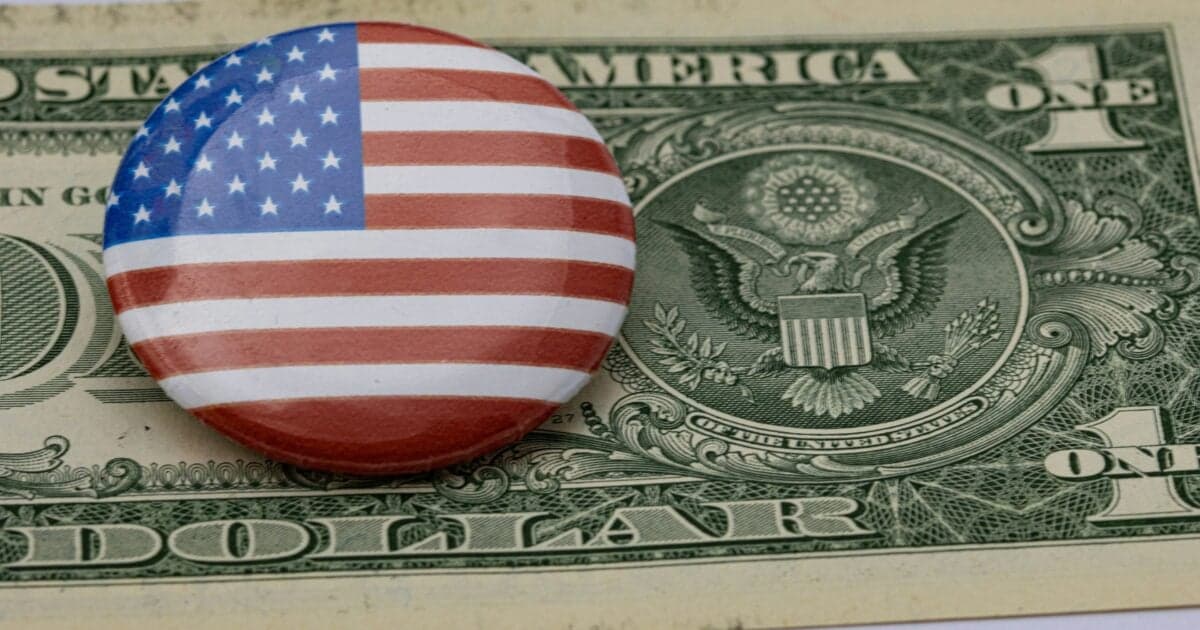Why the Fed’s ‘Soft Landing’ Could Turn Into a Crash Landing for Your Portfolio


Earlier this month, the Federal Reserve cut interest rates for the first time this year...
The U.S. Federal Reserve cut the one interest rate it controls, officially known as the "federal-funds rate," by 25 basis points ("bps"). This is the rate the big banks use for overnight lending. But, more importantly, the Fed's rate usually influences interest rates throughout the economy. That's why investors pay so much attention to it.
Going into the September meeting, the futures markets were assigning a probability of between 90% and 95% for a cut of 25 bps. There was a slim possibility of a larger cut of 50 bps.
More important is the likely direction of the Fed's rate going forward. And for that, we have to look at the dots...
What you're looking at is the Fed members' "assessments of appropriate monetary policy." Of course, nobody calls it that. It's usually just referred to as the "dot plot" or "the dots." It shows the opinion of each Fed member on the "appropriate" level of the fed-funds rate over time.
And when looking at the dots, investors key in on one thing – trajectory.
As you can see, there is disagreement about the precise levels. But the overall trajectory is clear. The Fed believes its rate will head lower in the years ahead.
This signals that the Fed believes it has pulled off (or will pull off soon) a "soft landing," that elusive outcome where it can cool inflation without triggering a recession.
The term "soft landing" comes from the lunar missions. The phrase made its way into everyday vocabulary in the early 1970s after the Apollo's successful missions to land on the moon.
Economists and central bankers have been using it ever since to describe the ideal way to bring an overheated economy back to Earth without a recession.
And, as mentioned, the Fed seems to think it has pulled that off.
My message today: I seriously doubt it.
If you are invested in the markets, read on to see why a soft landing is highly unlikely, what the bond market is saying about it, and what investors should watch out for going forward.
But first things first...
Have We Achieved a Soft Landing?
Over the past three years, the Federal Reserve has attempted to keep interest rates high enough for long enough to bring inflation down without causing a recession – in other words, to achieve an economic soft landing.
Remember, the Fed has two mandates:
- Maximum employment (keeping unemployment low)
- Price stability (keeping inflation in check)
Since 2021, the Fed has mostly been focused on No. 2. Remember, that was when consumer-price inflation began ticking up and reached near-double-digit levels in 2022. The Fed typically tamps down on inflation by raising its key rate. This tends to raise rates throughout the economy, making borrowing more expensive and generally slowing the economy.
With the latest cut, the total of its cuts since last September is 125 bps.
And the trajectory of the dots suggests the Fed is less worried about inflation and may be on the verge of a soft landing.
The U.S. economy grew 3.8% last quarter, and consumer spending remains strong.
With the economy humming and interest rates headed lower, many think the "all clear" sign is out. Back in September 2024, then-Treasury Secretary Janet Yellen said that we are on a path to a soft landing.
But Ms. Yellen was forgetting history.
Pulling that off is even harder than making a soft landing on the moon. Since NASA successfully landed six of its seven manned Apollo missions safely on the moon in the late 1960s and early 1970s, there have been roughly 50 attempts to land unmanned craft on the moon. Most have failed... The success rate is only 46%.
It's even more difficult to pull off economic soft landings...
The only time the Fed was able to do it was in 1995, 30 years ago. Every other time it failed... and the economy crashed into a recession.
And yet, despite this dismal track record, many think the Fed has done just that.
We've Been Fooled Before: The Warning Signs of 2008
You can't rely on the Fed, government officials, or the mainstream media to warn you of a recession or a crash. Remember, no one warned us about the last financial crisis in 2008.
Nearly everyone expected a soft landing back then too. Few saw the last financial crisis coming, despite the many obvious warning signs.
In May 2008, inflation was rising, and consumers were showing signs of distress. Home sales and prices were falling. Borrowers were defaulting on their mortgages, and millions faced foreclosure. Several small subprime lenders had already declared bankruptcy.
But the Fed and its economists assured investors there would be no recession.
Janet Yellen was the president of the Federal Reserve Bank of San Francisco back then. In late 2007, she'd said, "I think the most likely outcome is that the economy will move forward toward a soft landing."
But the bad news kept piling up. Credit continued to tighten. Big banks announced massive losses on their subprime loans. Investors started to worry, and the government really stepped up its efforts to "save" the economy...
The Fed began aggressively lowering interest rates, which coincidentally were around the same as they are today. And it injected billions of dollars of liquidity into the financial system.
No matter how hard the government and central bankers try to steer the massive economy out of trouble, we still have unavoidable boom-and-bust economic cycles.
Over the summer of 2008, regional banks started to fail. The government stepped in and bailed out big banks and automakers. But it couldn't stop the pain. By March 2009 − in a span of 10 months − the stock market had collapsed by 53%.
This was no soft landing. It was a full-scale crash.
There Will Be No Soft Landing This Time, Either
I don't know whether we'll see the kind of carnage and devastation we saw back in 2008. But I'm convinced we will not land softly.
All signs point to the same thing... We're headed for a recession.
Recessions typically only begin after the Fed begins lowering rates. That's what happened before the last four recessions going back to 1990.
We are seeing all the troubling signs you'd expect to see leading up to a recession. Credit-card debt is at an all-time high and still rising. The average interest rate on credit cards is now more than 20%.
The interest burden is suffocating most Americans. More and more folks are falling behind on their credit-card and car-loan payments. Delinquency rates on credit cards and car loans are soaring.
About 67% of the workforce is living paycheck to paycheck today, up from 63% last year.
It's just as bad for corporate America...
The cost of borrowing has risen sharply since 2021, and it's killing companies with high debt loads. In July, 71 U.S. companies went bankrupt, according to S&P Global. And the number of bankruptcies is accelerating. That's up from 66 in June. As of the end of July, 446 companies have gone under, the highest total for this seven-month period since 2010.
We may already be in the early stages of a recession. A recession has historically been defined as two consecutive quarters of a shrinking economy.
The U.S. economy shrank 0.5% in the first quarter and grew 3.8% in the second quarter. But these numbers are skewed by President Donald Trump's tariffs which caused businesses to ramp up imports in the first quarter and slash them in the second quarter.
Without the large swings in imports, our economy would have grown in the first quarter and shrunk in the second quarter. And remember, most of Trump's tariffs went into effect just recently. Tariffs are a tax on consumers and will only slow the economy further.
One "canary in the coal mine" for the overall economy is the trucking industry, which is already in its worst recession since 2008. It's one of many recession indicators that have been flashing red warning signs over the past 18 months.
And tariffs will only make the inflation problem worse.
The Bond Market Warns: Inflation Is Still a Huge Problem
The consumer price index ("CPI") spiked to 2.9% in August. Core inflation – which excludes volatile food and energy prices – is running even hotter, at 3.1%.
Not only is this above the Fed's 2% target, but it's going in the wrong direction. The CPI has increased every month since bottoming in April at 2.3%. Cutting interest rates in the face of rising inflation isn't going to bring inflation down.
The bond market seems to understand this...
Anyone celebrating the Fed's interest-rate cuts should pay attention to the interest rate that matters most... the 10-year Treasury rate.
The 10-year Treasury is the most important interest rate in the U.S. economy. It influences mortgage rates, credit-card interest rates, and corporate borrowing costs.
The Fed only controls the federal-funds rate, a short-term rate banks charge each other on overnight loans. But the market controls long-term rates.
And long-term interest rates haven't followed the Fed's cuts. Since the Fed began cutting interest rates last September, the 10-year Treasury rate has increased by more than 50 bps. It's around 4.1% today.
This rate likely won't fall until investors are confident that inflation is headed lower. But instead of taming inflation, the Fed is now stoking the fire... Lowering interest rates is inflationary, not deflationary.
To bring long-term interest rates down, I believe the Fed will soon be forced to resort to one of its old tricks: quantitative easing ("QE").
QE was a staple of the central bank's playbook following the last financial crisis and the pandemic. This is where the Fed steps into the bond market and buys long-term Treasurys. This market intervention causes longer-term interest rates to fall. And that's likely the only way those rates are coming down.
But QE is also inflationary because the Fed will have to resort to another one of its tricks to pay for it... printing money.
Don't Ignore the Money Supply: The True Cause of Inflation
Inflation is caused by one thing and one thing only... a rapid increase in the money supply.
The U.S. money supply never increased faster in its history than it did in the two years following the pandemic. That's why we have a sticky inflation problem today.
And it's why in April 2021 − when the Fed was saying rising inflation was "transitory" −
This isn't going away until we live through the next recession.
As the late Nobel Prize-winning economist Milton Friedman explained, the only way to get rid of the scourge of inflation is to persist with a combination of higher interest rates, higher unemployment, higher taxes, and a contraction in credit and the money supply.
The money supply was contracting for most of 2022 and 2023. It's a big reason why inflation came down. But since then, it has increased every month for the last 22 months.
That trend is likely to continue. The only way our government can realistically fund its ballooning budget deficits is by printing even more money. QE will make the problem much worse.
Investors are ignoring basic economics. Inflation and higher interest rates won't subside until we see real economic pain and a steady contraction in the money supply.
Don't be fooled by the stock market hitting all-time highs and rosy headlines. If you are counting on a soft landing, don't forget history. It's more difficult than landing on the moon.
Regards,
Mike DiBiase




